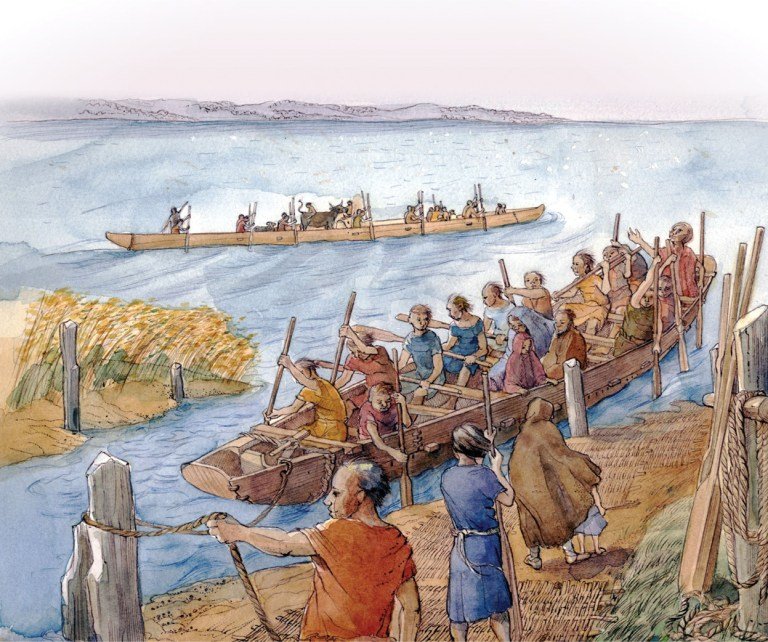For centuries, Egypt has reigned as the crown jewel of ancient civilization, a beacon of architectural brilliance, religious mysticism, and pharaonic grandeur. The Pyramids of Giza, the Sphinx, the Valley of the Kings—these timeless wonders have stirred imaginations and beckoned explorers, scholars, and tourists alike. Egypt’s history, recorded in stone and papyrus, reaches back more than 5,000 years. And yet, a growing chorus of voices—both scholarly and speculative—poses a tantalizing question: What if the story of civilization didn’t begin with the Egyptians? What if, beneath the shifting sands and submerged ruins, traces of an older, forgotten civilization wait to be discovered?
In recent decades, researchers, alternative historians, and even mainstream archaeologists have encountered peculiar anomalies—structures that defy their conventional timelines, myths that hint at lost epochs, and artifacts that don’t seem to belong. The notion of a civilization that predated Egypt—possibly influencing or even seeding its cultural framework—is no longer confined to fringe theory.
Could the sands of time be hiding something more ancient than we ever imagined? Let us step into the mystery.
The Conventional Timeline and Its Gaps
The accepted history of ancient Egypt places its origins around 3100 BCE, with the unification of Upper and Lower Egypt under the legendary King Narmer. Before this dynastic period, Egypt experienced the so-called “Pre-Dynastic” era—a time of proto-urban settlements and gradually developing social hierarchies. But here’s where things get intriguing: even this timeline assumes a relatively swift and linear progression from hunter-gatherer groups to advanced pyramid-builders.
The sheer sophistication of Egypt’s earliest monuments, including the colossal Pyramids of Giza, suggests a level of engineering, social organization, and astronomical knowledge that should have taken many centuries—if not millennia—to develop. Yet Egypt seems to have entered the historical stage fully formed, already armed with mathematical systems, symbolic language, irrigation infrastructure, and monumental architecture.
This has led many to wonder: Where did this sudden genius come from?
The Great Sphinx: A Puzzle of Erosion and Time
One of the most contentious pieces of evidence in the debate over a pre-Egyptian civilization is the Great Sphinx of Giza. While mainstream Egyptologists date the Sphinx to approximately 2500 BCE, during the reign of Pharaoh Khafre, others have challenged this claim based on geological evidence.
Dr. Robert Schoch, a geologist from Boston University, has studied the Sphinx’s enclosure walls and noted deep vertical weathering patterns inconsistent with mere wind erosion. Instead, he argues, they suggest prolonged exposure to heavy rainfall. The problem? Egypt hasn’t experienced such rainfall for thousands of years—possibly not since 7000 BCE or earlier.
If the Sphinx does indeed predate its conventional timeline by several millennia, it would imply the existence of a society capable of carving massive stone monuments well before the rise of dynastic Egypt. Who were these people? And why did they leave behind so little?
Göbekli Tepe: Civilization’s Smoking Gun?
Far from the Nile, in southeastern Turkey, lies a site that may help answer this question: Göbekli Tepe. Discovered in the 1990s and now dated to nearly 9600 BCE, Göbekli Tepe has turned the archaeological world on its head. It consists of enormous stone pillars arranged in circular patterns, some weighing up to 20 tons, all carved with detailed animal reliefs and complex symbols.
What makes Göbekli Tepe remarkable is its age. Built 6,000 years before Stonehenge and 7,000 years before the pyramids, it emerged long before humans were supposed to have settled into agricultural societies, let alone built megalithic temples.
If such a sophisticated site could exist 12,000 years ago in Anatolia, could there have been a similarly advanced culture further south—in the Nile Valley or its surrounding deserts—that has yet to be fully uncovered?
Lost Underwater Cities: Submerged Civilizations on the African Coast
In 2001, off the coast of India near Dwarka, sonar scans revealed the remnants of a vast underwater city, complete with roads, walls, and structures. While this site lies far from Egypt, it reignited interest in submerged civilizations worldwide.
Closer to Egypt, rumors and discoveries of underwater ruins in the Mediterranean and the Red Sea have fascinated researchers. Heracleion and Canopus, ancient cities submerged near Alexandria, were once considered mere legends. Their rediscovery proved that oral histories sometimes preserve truths modern science has yet to verify.
What else might lie beneath the waters of the Nile Delta or the shores of ancient Nubia? Could melting ice caps and rising sea levels at the end of the last Ice Age have submerged an entire epoch of early civilization?
The Myth of Zep Tepi: Echoes of a Forgotten Age
Ancient Egyptian mythology tells of “Zep Tepi,” or “the First Time”—a golden age when gods walked among humans, civilization was born, and chaos was tamed. Inscriptions describe great beings like Osiris, Thoth, and Horus shaping the world before the first pharaohs ruled.
Mainstream scholars interpret these tales as allegory, metaphors for cosmic order and kingship. But some researchers suggest that Zep Tepi may encode memories of a real civilization, long lost and later mythologized. Could the gods of Zep Tepi have been the cultural remnants—or survivors—of a pre-cataclysmic society?
If so, their “divine powers” might have been advanced technology misinterpreted by later generations as magic. The myths would then be echoes—blurred by time—of real historical events.
The Nabta Playa Calendar: Astronomy Before the Pharaohs
In the Nubian Desert, not far from the Egyptian border with Sudan, lies Nabta Playa, a megalithic stone circle dated to at least 5000 BCE—possibly older. This site includes astronomical alignments that prefigure Stonehenge by millennia, suggesting that its builders had a detailed understanding of solstices and stellar movements.
What’s remarkable is that Nabta Playa predates even the earliest pyramids, indicating that complex ceremonial and astronomical knowledge existed in North Africa long before Egypt’s dynasties.
Could Nabta Playa have been the work of a transitional culture, inheriting knowledge from an even earlier society? Some scholars suggest that climate changes forced ancient populations to migrate from the Sahara to the Nile Valley, bringing their knowledge with them and sowing the seeds of Egypt’s sudden sophistication.
Advanced Engineering and Impossible Precision
Many of Egypt’s monuments defy explanation even today. The Great Pyramid of Giza is aligned to true north with mind-boggling accuracy, its base level within centimeters across hundreds of meters. Massive granite blocks, some weighing up to 70 tons, were transported from quarries hundreds of miles away.
The tools attributed to the ancient Egyptians—copper chisels and stone hammers—seem inadequate for such feats, particularly in shaping granite.
Some suggest these marvels are evidence not merely of labor but of lost knowledge—possibly even technology inherited from an earlier age. Whether through advanced mathematics, unknown tools, or techniques lost to history, the builders of Egypt’s greatest wonders may have stood on the shoulders of forgotten giants.
Cultural Parallels and Global Similarities
One curious feature of ancient civilizations is their global synchronicity. Pyramids in Egypt, Mesoamerica, and China; megalithic stones in Europe and the Middle East; myths of great floods, sky gods, and world ages—all these appear across geographically disconnected cultures.
While mainstream anthropology explains these similarities through convergent cultural evolution, others wonder if they point to a shared origin—perhaps a progenitor civilization whose knowledge dispersed after a global catastrophe.
Could survivors of a lost culture have seeded knowledge among emerging peoples, giving rise to parallel developments in architecture, astronomy, and religion? If so, Egypt may be one of many legacies rather than the starting point.
Suppressed Discoveries and the Politics of History
Why, one might ask, hasn’t the academic world fully embraced these possibilities? The answer lies partly in the politics of history. Archaeology, for all its scientific trappings, is shaped by funding, academic consensus, and institutional inertia.
Ideas that challenge established timelines often face resistance, not necessarily because they lack merit, but because they require rewriting large swathes of accepted history. Admitting that civilization could have begun earlier, or that lost cultures existed, would shake the foundations of human history as we know it.
Furthermore, many promising sites lie in politically unstable regions or under modern cities, making excavation difficult or impossible. Others are neglected due to lack of resources or deemed unimportant because they don’t fit current models.
Still, the pieces of the puzzle keep accumulating.
The Legacy of a Forgotten World
So, did an unknown civilization precede the Egyptians? The evidence, while fragmented and controversial, is compelling. Geological anomalies at the Sphinx, astronomical alignments at Nabta Playa, global myths of a golden age, the unexplained genius of ancient engineering—all hint at the possibility that Egypt was not the beginning but a brilliant continuation of something older.
The sands of time do not give up their secrets easily. But as new technologies—LIDAR scanning, satellite imagery, and underwater archaeology—expand our capabilities, more pieces of the ancient puzzle come to light.
Whether through myth, stone, or the stars, whispers from the deep past continue to call. Perhaps the true cradle of civilization lies not only along the Nile, but buried beneath deserts, oceans, and collective memory—waiting to be remembered.






